
| From Wyoming Tales and Trails This Page: Sublette County, Pinedale, Cora. |
 |

| From Wyoming Tales and Trails This Page: Sublette County, Pinedale, Cora. |
 |
|
|
|
About This Site |
|
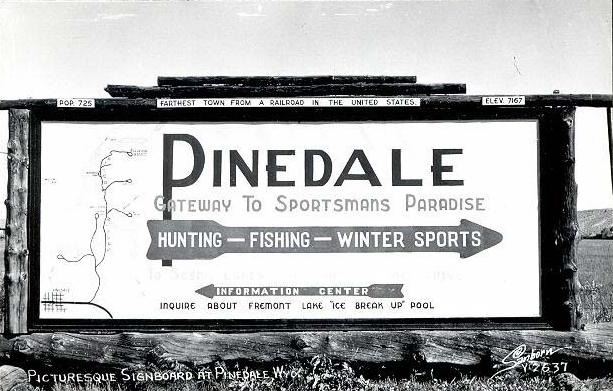 Welcoming Sign, Pinedale, 1940's
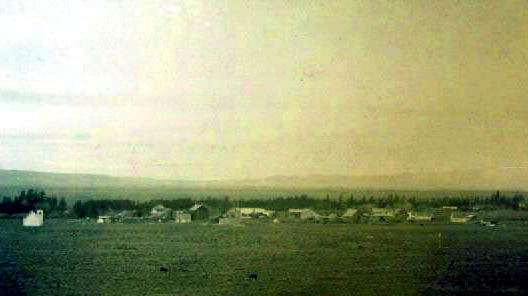 Distant view, Pinedale, 1911.
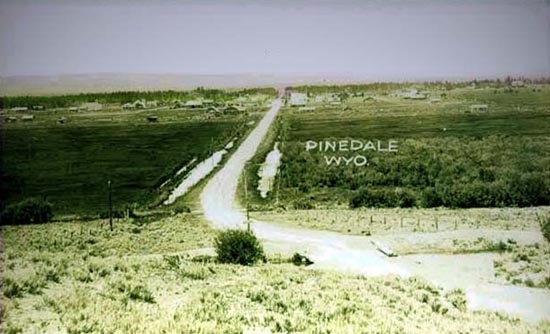 Pinedale, approx. 1932 Other reminders of the early mountain men exist. Indeed, the very name of the county serves as a reminder. To the north of Pinedale, north of Bondurant, leads the Hoback River along which three Kentucky veterans of the Henry expedition led Hunt to the Snake. Although there are some seven different places in Wyoming named after John Hoback, what we know of him is scant, dependent for the most part on Washington Irving's Astoria. From Irving we learn that Hoback with his two companions, Edward Robinson and Jacob Rizner [also spelled by Irving as "Rezner" and spelled by Gabriel Franchère in his journal as "Regner"], were returning east when they came upon the Hunt party which was without knowledgable guide. They agreed to guide Hunt to the Snake River. Thus, Hunt was guided along the canyon and river named after Hoback. Irving described the journey: Being now well supplied with provisions, Mr. Hunt broke up his encampment on the 24th of September, and continued on to the west. A march of fifteen miles, over a mountain ridge, brought them to a stream about fifty feet in width, which Hoback, one of their guides, who had trapped about the neighborhood when in the service of Mr. Henry, recognized for one of the head waters of the Columbia. The travellers hailed it with delight, as the first stream they had encountered tending toward their point of destination.Upon reaching the Snake, the three separated from the Hunt expedition and spent the next year trapping in the vicinity of Bear River. The following year, Robert Stuart's Astorians came upon the three, destitute and surviving on fish. Stuart from a cache re-outfitted the three. Later the three joined in a winter trapping party led by a John Reed from Astoria. As discussed with regard to the fur trade, the entire party perished.
 St. Hubert's Episcopal Chapel, Bondurant At Bondurant, within Hoback Canyon, is a chapel dedicated to St. Hubert the Hunter, patron saint of trappers. The chapel, on the National Register, was constructed in 1940 and 1941. The Rt. Reverend Winfred Hamlin Zeigler (1885-1972), Bishop of Wyoming, found himself isolated by a winter blizzard in Bondurant. Bondurant, at the time, had neither community center nor church. In gratitude for the welcome he found in Bondurant, Bishop Zeigler went to the presiding bishop of the Church, James DeWolf Perry, and received $1500.00 from the sale of a diamond that had been given to the presiding bishop for the construction of a memorial church. Bishop Zeigler returned to Bondurant and with volunteers cut lodgepole pines and constructed the little chapel. The bishop, while logging, on one occasion fell into the icy waters of the stream. Thus, in a sense, the bishop was baptised by immersion. The $1500 was used for hardware, windows, and floor covering.
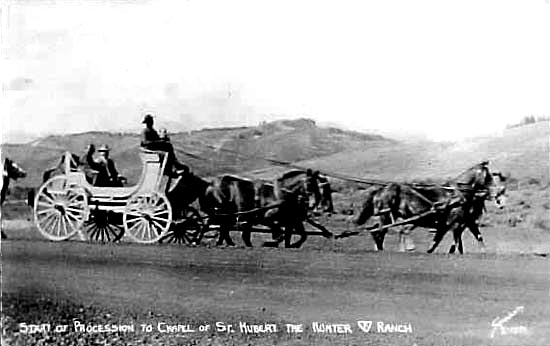 Procession, August 1941, for dedication of St. Hubert's The little chapel was dedicated with a barbecue attended by the bishop and Governor Nels H. Smith. Annually, on the last Sunday of June, the community has a service and barbecue at the little chapel.
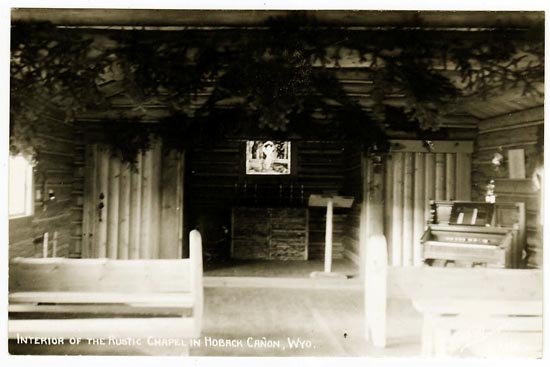 Interior, St. Hubert's, 1941 St. Hubert (c. 656- 727) is, as above noted, the patron saint of trappers. St. Hubert, as a young man, loved to hunt. One day, when Hubert was hunting, a stag that he was about to slay advised Hubert that he should change his ways and lead a holy and chaste life. St. Hubert repented his wickedness and entered the church. Ultimately St. Hubert became the first Bishop of Liege.
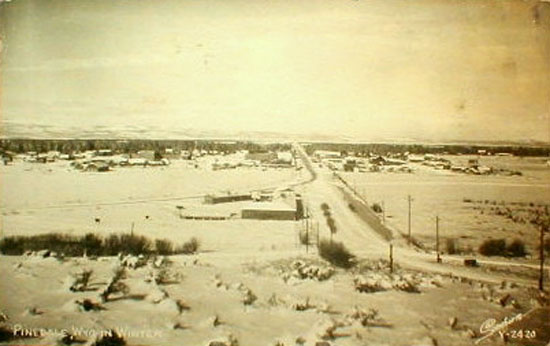 Pinedale, late 1930's
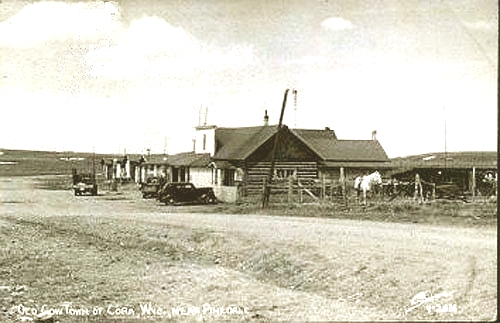 Cora, late 1930's.
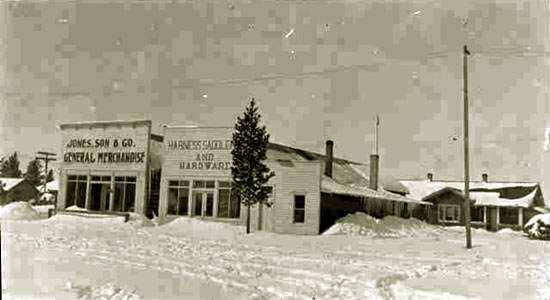 Jones, Son & Co., the Harness, Saddlery and Hardware, and Dr. Alexander's, Franklin Ave., approx. 1920. Because of bad roads and distances, the area remained isolated. During the first week of August 1907 an unsuccessful attempt was made to reach Pinedale by automobile from Rock Springs. The following week the attempt was successful, with the automobilists taking only seven hours to go the 110 miles from Rock Springs. Thus, the primarily means of access to the area remained by stage. The fare to Kemmerer in 1905 was $8.00, to South Pass $6.00.
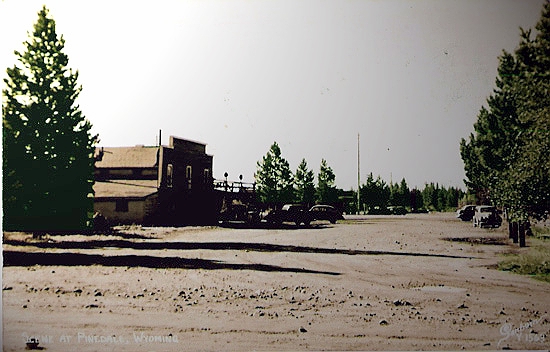 Pinedale, approx. 1941. |